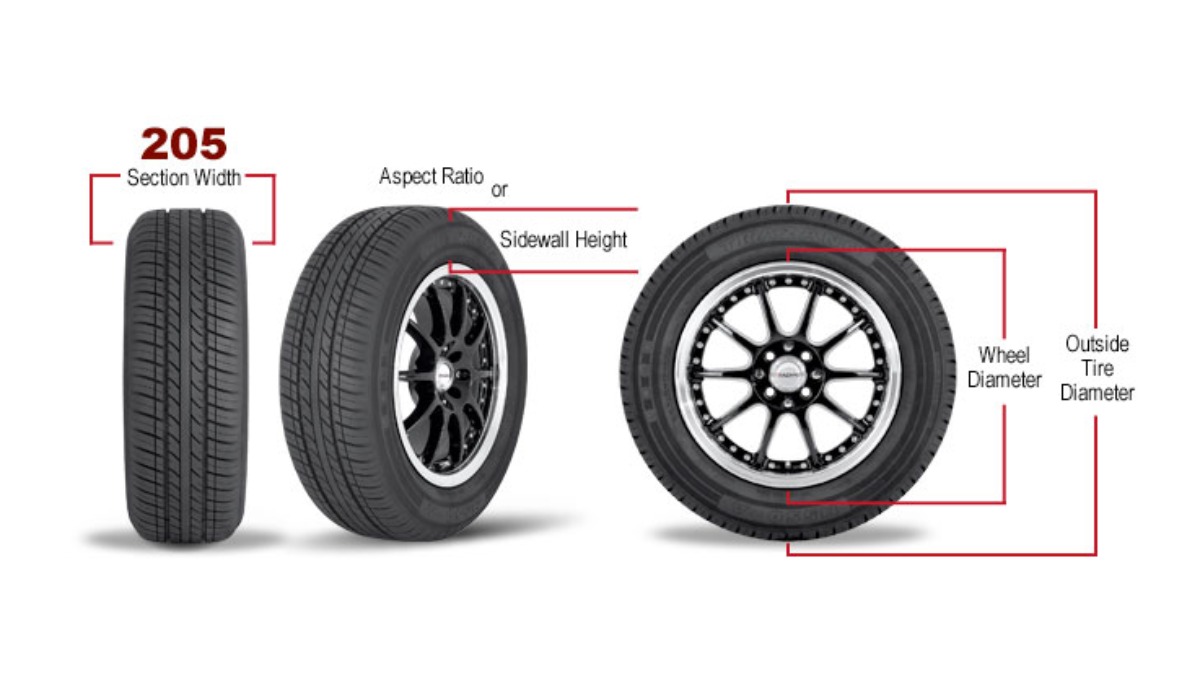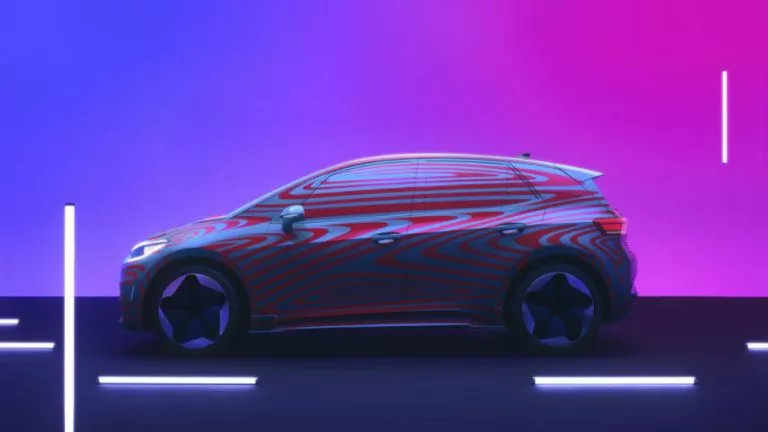How Wheel Size Affect Efficiency And Performance In Electric Cars?

The wheel size of a car plays a crucial role in improving fuel efficiency or, in the case of electric cars, its battery range.
Most people disregard the importance of wheel size; however, it plays a more vital role than you think, especially in electric cars.
How To Read A Tire Information?
Before we move forward, it is imperative that we know how to read and interpret the information displayed on a vehicle’s tire.
The usual tire information is laid out in this format:

Now, this information has three main parts: the aspect ratio, the width of the contact patch and the diameter of the wheel. Each aspect of the tire has a role to play.
If a tire has a higher/thicker sidewall, it’ll have a higher aspect ratio, represented here by the number “70”. A tire with a higher aspect ratio offers a comfortable ride but not particularly better performance and vice-versa.
If the contact patch of the tire, represented by “225”, is wide, it will offer a better grip but it’ll also increase the rolling resistance along with reducing efficiency.
Wheel size, 16 inches, is related to the diameter of the wheel. A bigger wheel can accommodate a wider or bigger tire. Here’s a simplified version: 
Why Do Different Tires or Wheel Size Affect Efficiency In Electric Cars?
Due to the massive lithium-ion batteries, electric cars are heavier than conventional internal combustion cars. Additionally, in the case of electric vehicles, it becomes more important to choose your tires wisely as these cars are silent cars.
Being a silent car, choosing the wrong tire can lead to unnecessary screeching noises while driving. Tires carry the whole weight of a vehicle.
An ideal tire will not only improve efficiency, but it will also provide better handling, cornering, braking, grip, and performance.
One of the significant factors that determine the tire’s performance is rolling resistance. For a tire to be efficient, it is crucial to have low rolling resistance.
Higher rolling resistance means more energy is needed to move the car forward and hence less battery range. The same goes for gasoline cars as well.
Role of Big Wheels/Rims Size in Efficiency and Performance of Electric Cars:
 Generally, bigger wheels are for better performance. A bigger wheel can accommodate a wider tire and hence provide a better grip.
Generally, bigger wheels are for better performance. A bigger wheel can accommodate a wider tire and hence provide a better grip.
However, installing bigger wheels on a car with a small engine does not make any sense. The tire will cause higher rolling resistance, leading to a loss of energy from an already small and less powerful engine.
Most automakers, especially Tesla, provide two-wheel options for its electric cars: an economical smaller wheel for better efficiency and a bigger wheel for performance models.
Bigger tires have a wider contact patch, which provides better grip and stability during cornering.
Additionally, they also assist in achieving higher top speeds. An obvious drawback is that big tires are heavier compared to the smaller ones.
When you switch to a bigger tire without changing the size of your current wheel, then the process is called upsizing a tire. When you switch to a smaller tire on your vehicle without changing the wheel size, the process is then called downsizing.
Pros of A Bigger Wheels:
- More stability at higher speeds
- Better cornering and vehicle stability
- Improved grip and traction
- Overall improved performance
Cons of A Bigger wheels:
- Compromised Battery range or fuel efficiency
- Uncomfortable ride due to a thin tire sidewall.
- Relatively more expensive than smaller tires
- due to wider contact, the tires are worn out at a higher pace compared to smaller tires.
Effect of smaller wheels on cars:
Most of the automakers provide different wheel options for their car based on the application. For example, the Tesla Model S electric cars come in two variants – Performance and Long Range Plus – both of them with optional 19″ and 21″ wheels.
The Performance variant has a range of 348 miles with 19″ wheels. However, the range or we can say efficiency reduces to 326 miles with larger 21″ wheels.

Pros of Smaller Car Wheels:
- Better efficiency or range in conventional and electric cars
- More Affordable as compared to bigger wheels
- It provides better acceleration at low speeds
- Tires last long and provide a comfortable ride albeit with less on-road grip
Cons of Smaller Car Wheels:
- Not as good as the bigger wheels in terms of performance and stability.
- It does not give you that sporty look you can have with bigger rims.
How Tire Materials Affect Efficiency in Conventional And Electric Cars
The grip of a car’s tire is determined not just by its size but by the material it is made of. Grip increases rolling resistance and high resistance has a significant effect on efficiency as well as the performance of a vehicle.
Decades ago, the tires were made up only of carbon as the main composition. However, nowadays, there is another material called “silica” that is being used in the manufacturing of tires.
Silica offers less friction; its molecules are bouncy, which in turn provides low rolling resistance, whereas carbon tires due to friction offer high rolling resistance. Furthermore, when burned carbon tires contribute greatly to emissions.
In short, if you are the kind of person who prefers to drive within safe limits and keep an eye on efficiency, then you must go with the smaller tires provided by the company.
However, if you are looking to get the maximum performance out of your gasoline or electric car, then go for the bigger wheels recommended by the automaker.






